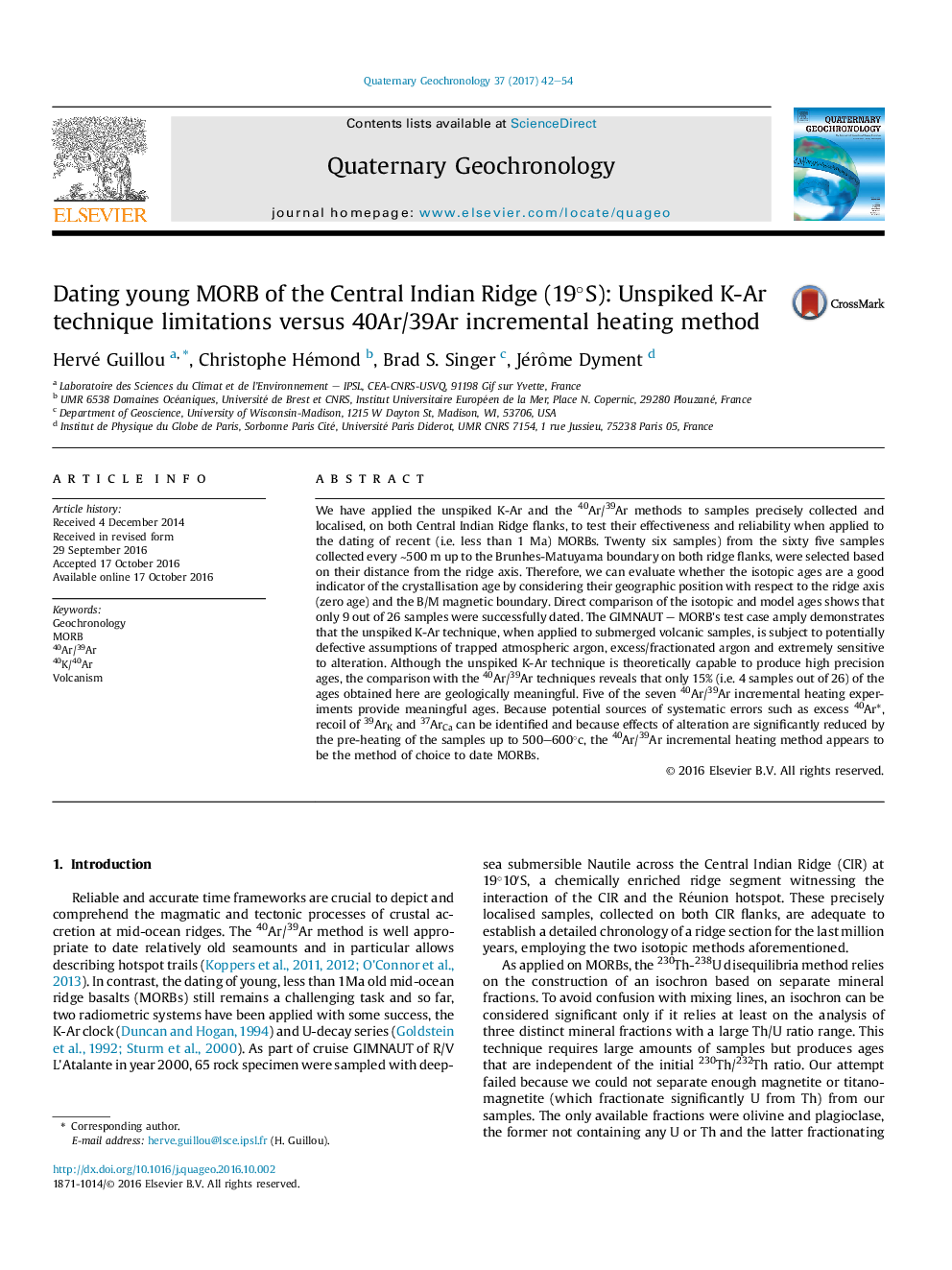| کد مقاله | کد نشریه | سال انتشار | مقاله انگلیسی | نسخه تمام متن |
|---|---|---|---|---|
| 6442458 | 1639839 | 2017 | 13 صفحه PDF | دانلود رایگان |
عنوان انگلیسی مقاله ISI
Dating young MORB of the Central Indian Ridge (19°S): Unspiked K-Ar technique limitations versus 40Ar/39Ar incremental heating method
دانلود مقاله + سفارش ترجمه
دانلود مقاله ISI انگلیسی
رایگان برای ایرانیان
موضوعات مرتبط
مهندسی و علوم پایه
علوم زمین و سیارات
ژئوشیمی و پترولوژی
پیش نمایش صفحه اول مقاله

چکیده انگلیسی
We have applied the unspiked K-Ar and the 40Ar/39Ar methods to samples precisely collected and localised, on both Central Indian Ridge flanks, to test their effectiveness and reliability when applied to the dating of recent (i.e. less than 1 Ma) MORBs. Twenty six samples) from the sixty five samples collected every â¼500 m up to the Brunhes-Matuyama boundary on both ridge flanks, were selected based on their distance from the ridge axis. Therefore, we can evaluate whether the isotopic ages are a good indicator of the crystallisation age by considering their geographic position with respect to the ridge axis (zero age) and the B/M magnetic boundary. Direct comparison of the isotopic and model ages shows that only 9 out of 26 samples were successfully dated. The GIMNAUT - MORB's test case amply demonstrates that the unspiked K-Ar technique, when applied to submerged volcanic samples, is subject to potentially defective assumptions of trapped atmospheric argon, excess/fractionated argon and extremely sensitive to alteration. Although the unspiked K-Ar technique is theoretically capable to produce high precision ages, the comparison with the 40Ar/39Ar techniques reveals that only 15% (i.e. 4 samples out of 26) of the ages obtained here are geologically meaningful. Five of the seven 40Ar/39Ar incremental heating experiments provide meaningful ages. Because potential sources of systematic errors such as excess 40Ar*, recoil of 39ArK and 37ArCa can be identified and because effects of alteration are significantly reduced by the pre-heating of the samples up to 500-600°c, the 40Ar/39Ar incremental heating method appears to be the method of choice to date MORBs.
ناشر
Database: Elsevier - ScienceDirect (ساینس دایرکت)
Journal: Quaternary Geochronology - Volume 37, February 2017, Pages 42-54
Journal: Quaternary Geochronology - Volume 37, February 2017, Pages 42-54
نویسندگان
Hervé Guillou, Christophe Hémond, Brad S. Singer, Jérôme Dyment,